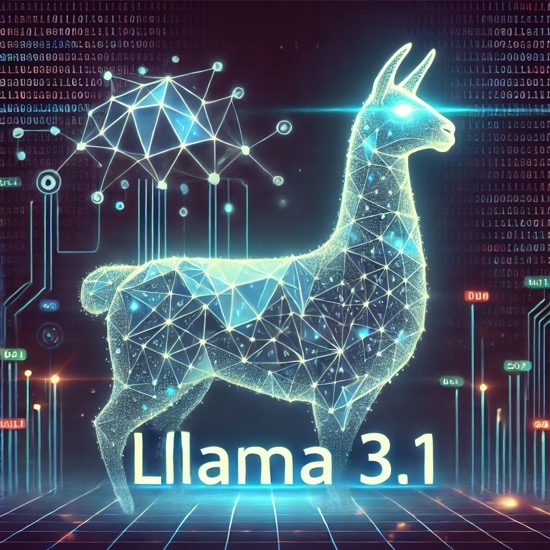Meta Unveils Llama 3.1: A 405B Parameter Open-Source AI Model

TL;DR
Meta has released Llama 3.1, including a 405B parameter model that competes with top proprietary AI systems. This open-source release features multilingual support, extended context length, and advanced reasoning and tool use capabilities, potentially accelerating AI innovation and accessibility.
Introduction
Meta has taken a giant leap in artificial intelligence with the release of Llama 3.1, its latest suite of open-source language models. The crown jewel of this release is the massive 405 billion parameter model, positioning Llama 3.1 as a formidable competitor to leading proprietary models from tech giants like OpenAI and Anthropic.
Key Features of Llama 3.1
Unprecedented Scale: The 405B parameter model is Meta's most significant to date, trained on over 15 trillion tokens using 16,000 NVIDIA H100 GPUs!!! 🤯
Extended Context Window: All models in the Llama 3.1 family now boast a 128K token context window. This significant upgrade allows for processing much more information in a single prompt.
Multilingual Proficiency: Enhanced support for eight languages, including English, German, French, Italian, Portuguese, Hindi, Spanish, and Thai.
Advanced Capabilities: State-of-the-art performance in general knowledge, reasoning, math, tool use, and multilingual translation.
Benchmarking Against the Best
Meta claims that Llama 3.1 405B rivals or surpasses top-tier models like GPT-4 and Claude 3.5 Sonnet across various benchmarks. This bold assertion is backed by impressive performance metrics, with the model outperforming many existing systems in tests such as GSM8K and Hellaswag.
Open-Source Philosophy and Ecosystem
Meta's commitment to open-source AI is evident in its approach to Llama 3.1's release. The models are available for download on Hugging Face and through cloud partners, including AWS, Azure, and Google Cloud. This accessibility aims to foster innovation and democratize AI development.
Mark Zuckerberg, Meta's CEO, drew parallels between the potential impact of open-source AI and the transformative role of Linux in corporate computing. He believes Llama 3.1's release could mark "an inflection point in the industry where most developers begin to use open models primarily."
Implications for AI Development
The release of Llama 3.1, especially the 405B model, opens up new possibilities for the AI community:
- Synthetic Data Generation: Enables creating high-quality training data for smaller models.
- Model Distillation: Allows for developing more efficient, smaller models without compromising performance.
- Research Acceleration: Provides researchers with a powerful tool to explore advanced AI capabilities and applications.
Challenges and Considerations
While the release of Llama 3.1 is groundbreaking, it's not without challenges:
- Computational Requirements: Running the 405B model requires significant computational resources, potentially limiting its accessibility for smaller organizations.
- Ethical Concerns: The power of such a large model raises questions about responsible AI use and potential misuse.
- Licensing Debates: Despite being labeled as "open-source," some industry experts argue that the licensing terms still contain restrictions that may not align with true open-source principles.
Conclusion
Meta's Llama 3.1, mainly the 405B parameter model, represents a significant milestone in open-source AI development. Meta is potentially reshaping the AI landscape by rivaling proprietary models in capability while maintaining an open approach. As developers and researchers explore and build upon this new frontier, we may see an acceleration in AI innovation and applications across various industries.
The true impact of Llama 3.1 will unfold in the coming months as the community engages with these powerful new tools. One thing is certain: the line between open-source and proprietary AI models has never been thinner, and the future of AI development looks more open and collaborative than ever before.
FAQ:
Q: How does Llama 3.1 compare to other AI models?
A: According to Meta, Llama 3.1 405B rivals or surpasses top proprietary models like GPT-4 and Claude 3.5 Sonnet in various benchmarks.
Q: Can anyone use Llama 3.1?
A: The models are available for download, but running the 405B model requires significant computational resources.
Q: What languages do Llama 3.1 support?
A: It supports eight languages: English, German, French, Italian, Portuguese, Hindi, Spanish, and Thai.